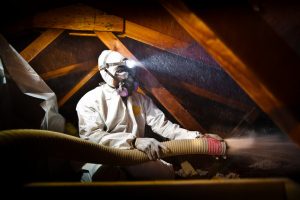 Energy efficiency is a critical clean energy resource supporting domestic and global efforts to achieve sustainability targets. Investments in energy efficiency also produce high economic returns, you can compare business energy prices to see the difference yourself, and these financial benefits are most likely to drive investment decisions. The social benefits of energy efficiency —especially when applied to low income housing—may be even greater. Social benefits include increased quality and quantity of affordable housing due to lower utility bills, job creation, and improved indoor air quality from reduced emissions.
Energy efficiency is a critical clean energy resource supporting domestic and global efforts to achieve sustainability targets. Investments in energy efficiency also produce high economic returns, you can compare business energy prices to see the difference yourself, and these financial benefits are most likely to drive investment decisions. The social benefits of energy efficiency —especially when applied to low income housing—may be even greater. Social benefits include increased quality and quantity of affordable housing due to lower utility bills, job creation, and improved indoor air quality from reduced emissions.
Since low income housing is older and less efficient, the economic returns from investments in efficiency are particularly high. For example, 85 percent of homes in Buffalo were built prior to 1940. Under these conditions, city residents pay an annual average of $900 per person on home energy costs. Proven investments like insulation and air sealing can save a family over $1000 in a year, with the added benefits of reducing emissions and improving air quality. With targeted investments in specific neighborhoods, property values rise and communities become more habitable. PUSH Buffalo, a nonprofit organization working in Buffalo’s West Side, has already contributed to a revitalization and increase in property values demonstrating the impact of targeted investments.
The challenge however is mobilizing greater amounts of capital for low income energy efficiency retrofits. New York State is putting significant resources to work: NYSERDA has committed $234 million in low- to moderate-income clean energy investments through the first three years of the Clean Energy Fund. In 2017, the Governor committed to retrofit 20,000 low income homes through state programs, an increase of 25 percent from the previous year.
Private capital is also necessary to achieve scale and reach a larger concentration of the 1.65 million households who currently receive energy bill payment assistance. NYSERDA is now exploring ways it can leverage public funds to mobilize third party investments. Together, public, private, and philanthropic funders can achieve synergies by investing jointly in low income energy efficiency projects to multiply the economic, environmental, and social returns on investment.
All the pro-energy efficiency points made in this article are spot-on. Still, it’s vexing that the uptake of building energy efficiency actions has been so slow to scale. While we… Read more »
Thanks for a timely and thoughtful post, John. Per Nancy’s apt commentary on the broader policy and market response to what should be a common sense opportunity, I… Read more »
John, Thank you for bringing this subject up. It is a big issue that has massive opportunity. 1) I believe we need new investment models that can integrate the ideas… Read more »
While individual programs to promote energy efficiency in homes is a good thing, we are beyond the point where incremental steps will address the problem of climate change. Putting a… Read more »
In response to the insightful comments so far, I’d like to provide one example of an initiative that aims to scale up investment in efficiency: using Pay for Success to… Read more »
John, The Pay for Success / Social Impact Bond model is a good one to be testing. Hopefully the pilot bears fruit and can be replicated in other areas. Another… Read more »
[…] far less energy than traditional incandescent bulbs, and they also require very little maintenance. compare business energy saving devices also reduces your risk of carbon dioxide release, which contributes… Read more »